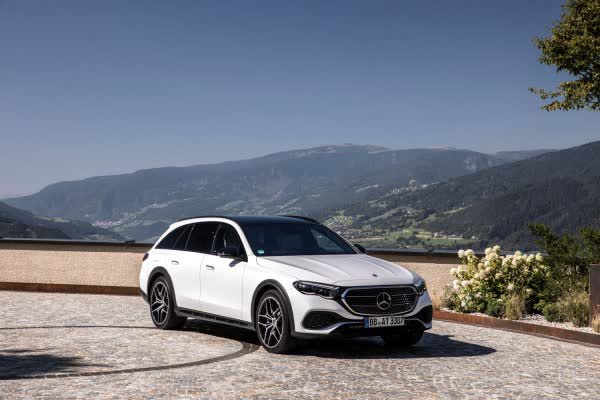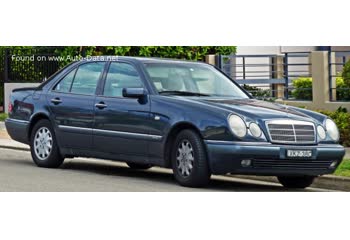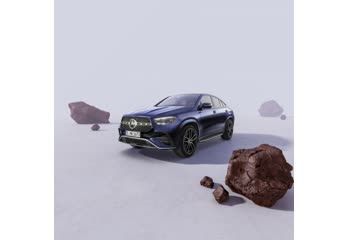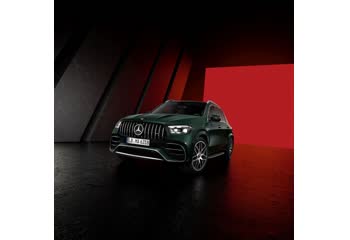Everything you need to know about specifications and performance - Mercedes-Benz E-class 2023 - E 300de (313 Hp) Plug-in Hybrid 4MATIC 9G-TRONIC

Overview:
What is the engine capacity of a Mercedes-Benz E-class 2023?
The engine capacity of the Mercedes-Benz E-class 2023 is 1993.
Mercedes-Benz E-class 2023 How many horsepower?
The engine power of the Mercedes-Benz E-class 2023 is 197 Hp.
What is the Mercedes-Benz E-class 2023 engine?
Mercedes-Benz E-class 2023 engine is OM 654 M. (Click to see other cars using the same engine)
How powerful is the electrical system in the Mercedes-Benz E-class 2023?
The power of the electrical system in the Mercedes-Benz E-class 2023 is 313 Hp hp.
General:
Brand: Mercedes-Benz
Model: E-class
Generation: All-Terrain (S214)
Modification (Engine): E 300de (313 Hp) Plug-in Hybrid 4MATIC 9G-TRONIC
Start of production: September, 2023
End of production:
Powertrain Architecture:Plug-In Hybrid Electric Vehicles (PHEVs)
Body type: Station wagon (estate), Crossover
Seats: 5
Doors: 5
Engine:
Engine systems: Start & Stop System
Power: 197 hp
Power per litre: 98.8 hp/l
Torque: 440 nm
Engine Model/Code:OM 654 m
Engine displacement: 1993
Number of cylinders: 4
Engine configuration: Inline
Number of valves per cylinder: 4
Fuel injection system: Diesel Commonrail
Engine aspiration: Turbocharger, Intercooler
Valvetrain: DOHC
Engine oil capacity: 6 l
Engine layout: Front, Longitudinal
Cylinder Bore: 82 mm
Piston Stroke: 94.3 mm
Compression ratio: 15.5:1
Performance:
Fuel Type: Diesel / electricity
Combined fuel consumption (WLTP): 0.6-0.9 l/100 km
Emission standard: Euro 6d-ISC-Fcm
Acceleration 0 - 100 km/h: 6.9 sec
Acceleration 0 - 62 mph: 6.9 sec
Maximum speed: 213 km/h
Weight-to-power ratio: 7.4 kg/Hp, 135.2 Hp/tonne
Weight-to-torque ratio: 3.3 kg/Nm, 302.4 Nm/tonne
Max speed (electric): 140 km/h
Acceleration 0 - 60 mph: 6.6 sec
Electric system:
Gross battery capacity: 25.4 kWh
Battery technology: Lithium-ion (Li-Ion)
System power: 313 hp
System torque: 700 nm
All-electric range: 81-97 km
Electric motor power: 129 hp
Electric motor Torque: 440 nm
Average Energy consumption: 22.9-25.1 kWh/100 km
Electric motor location: Between the combustion Engine and the transmission
Average Energy consumption (WLTP): 22.9-25.1 kWh/100 km
Electric motor type: Synchronous
All-electric range (WLTP): 81-97 km
Space:
Kerb Weight (kg): 2315
Max. weight (kg): 2970
Max. roof load: 100 kg
Max load (kg): 655
Trunk (boot) space - maximum: 1675 l
Trunk (boot) space - minimum: 460 l
Permitted trailer load with brakes (12%): 2100 kg
Fuel tank capacity: 50 l
AdBlue tank: 24 l
Permitted trailer load without brakes: 750 kg
Permitted towbar download: 84 kg
dimensions:
Length: 4950 mm
Width: 1889 mm
Height: 1489 mm
wheelbase: 2961 mm
Width including mirrors: 2065 mm
Front track: 1632 mm
Rear (Back) track: 1611 mm
Front overhang: 848 mm
Rear overhang: 1141 mm
Minimum turning circle (turning diameter): 12 m
Powertrain, Suspension and Brakes:
Drivetrain Architecture: The Internal combustion Engine (ICE) and the electric motor permanently drive the four wheels of the car with the ability to work in full electric or mixed mode.
Drive wheel: All wheel drive (4x4)
Number of gears and type of gearbox: 9 gears, automatic transmission G-TRONIC
Front brakes: Ventilated discs
Rear brakes: Ventilated discs
Assisting systems: ABS (Anti-lock braking system)
Steering type: Steering rack and pinion
Power steering: Electric Steering
Tires size: Front wheel tires: 255/40 R19
Wheel rims size: 19
Front suspension: Independent multi-link suspension, Transverse stabilizer, Air suspension
Rear suspension: Independent multi-link suspension, Air suspension, Transverse stabilizer
See also

Other generation.
Its production began in 1999 until 2000

2023 Mercedes-Benz GLE Coupe (C167, facelift 2023) GLE 350de (333 Hp) Plug-in Hybrid 4MATIC 9G-TRONIC
Same engine. (OM 654 M).
Its production began in 2023 until Now

Same engine. (OM 654 M).
Its production began in 2023 until Now

Write a comment